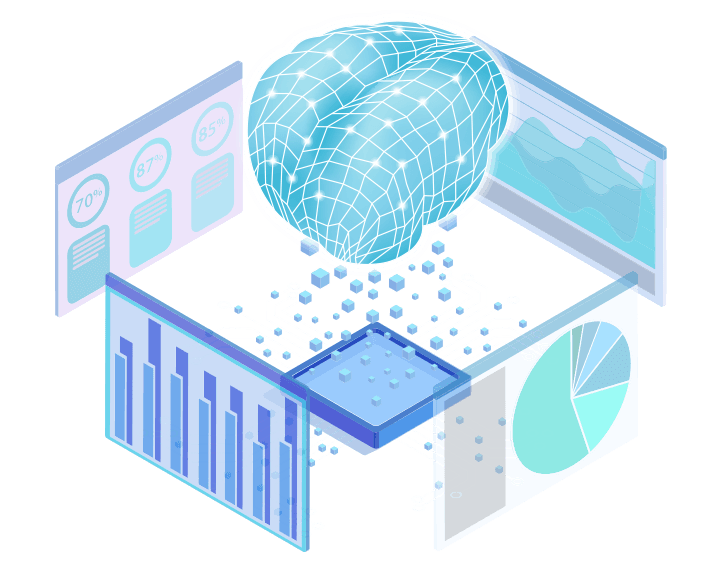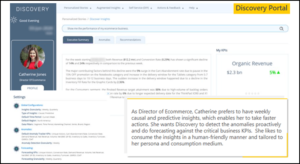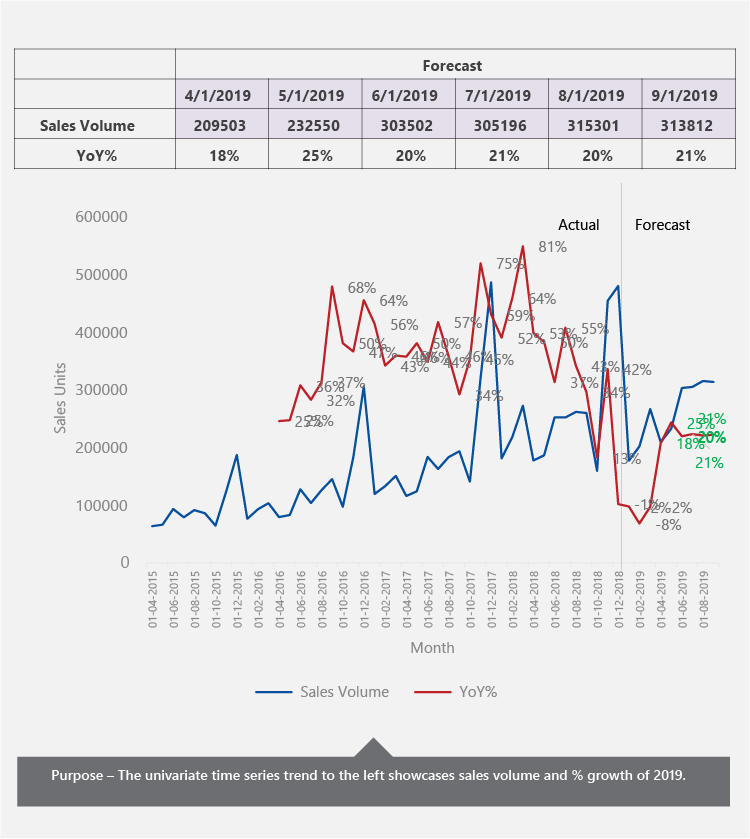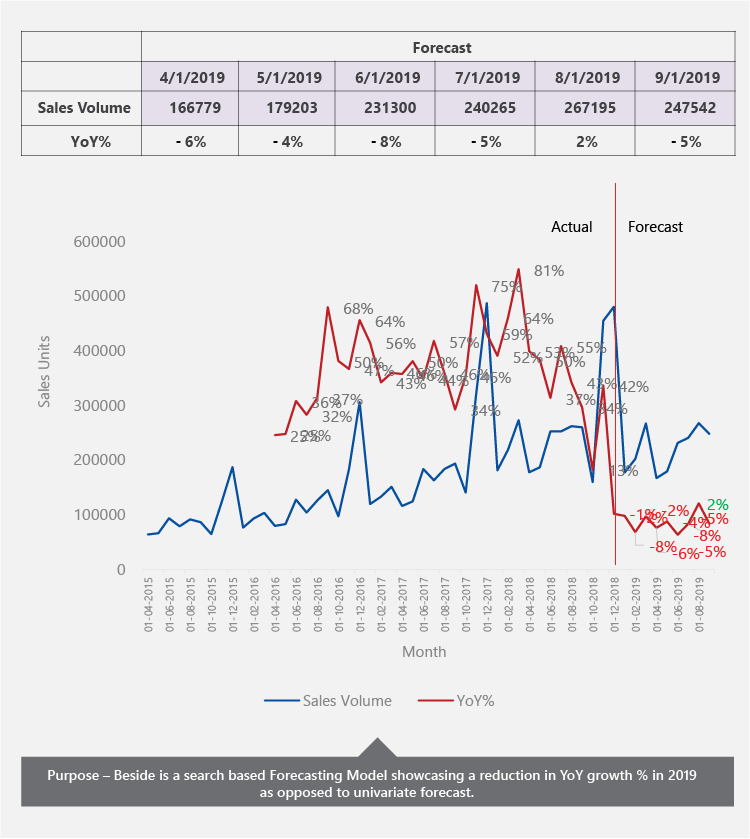AI for Predictive Analytics: Use Cases and Benefits
With the supply chain stabilizing in the wake of the COVID-19 pandemic, businesses have accepted the new way of doing things and are adjusting to the new normal. Many business leaders are resorting to innovative technologies to help them understand the new normal and get used to it. One of the most prominent technologies that have come to the fore in this respect, is AI predictive analytics.
With predictive analytics driving decision-making, businesses have been able to improve their inventory optimization endeavors, work on reducing operational costs, and ultimately drive improved ROI.
This blog explores a few of the most common predictive analytics use cases and their benefits. So, whether you’re a business owner or a data analyst, predictive analytics capabilities can optimize your operations and influence outcomes.
But let’s start at the top with what the concept entails and where you can find value.
What is AI Predictive Analytics?
With digitization and the rise of e-commerce leading to massive changes in how customers shop, leaders realized that historical data-based decision-making would no longer remain relevant. The shake-up of traditional retail, a saturation of the marketplace, and a drive to gain a competitive edge; meant that leaders had to find ways to predict future trends and outcomes, and be prepared for them.
Enter Predictive Analytics.
Predictive analytics refers to a branch of advanced analytics for determining future outcomes and their likelihood of occurrence. It uses complex and diverse techniques, such as statistics, data modeling, ML, and data mining, to derive possible future possibilities. Organizations can then use these results to make decisions regarding their business.
Why is Predictive Analytics Important?
Predictive analytics is a vital tool that can be used to forecast demand, identify risks, and optimize marketing campaigns by analyzing both historical and current data, along with related factors. By understanding your customer’s behavior through actionable insights presented in narrative form, you can optimize marketing and sales initiatives, drive R&D, manage product development and inventory management, and streamline the supply chain.
AI predictive analytics facilitates improved decision-making, faster response times, and reduced costs, with actionable insights available in near real-time. AI-driven predictive analytics essentially helps companies make better decisions by forecasting market conditions, customer behavior, and related factors – assisting decision-makers to avoid risks and capitalize on opportunities.
Related Article: Combating Model Drift in Predictive Modeling
Predictive Analytics: Use Cases
Predictive analytics is cutting-edge technology that uses AI to automate data analysis and forecast future events and trends. By understanding market conditions and your customer’s behavior, you can create a better user experience for them. Improved customer experience translates to higher ROI and minimized customer churn. This technological asset is valuable to businesses for the number of benefits that it offers.
Here are some of the most popular predictive analytics use cases –
Fraud Detection
With fraudsters becoming more innovative every day, businesses need to find better ways to safeguard their data and other critical information. Predictive analytics models can detect anomalies and unusual behavior to help companies proactively unearth threats.
For this, the model uses historical data with AI-generated possibilities to send a notification to the requisite people in advance. It helps limit the chance of a possible data breach.
Analytics, Redefined
Analytics, or the use of data and technology to support decision-making, has become an essential part of business operations. Predictive analytics enables businesses to amplify their analytics capabilities and make better-informed decisions by predicting future events – such as customer behavior or financial results.
Such analysis is used in various industries – from banking and insurance to retail and even information technology (IT). Simply providing relevant data is often all that’s necessary for predictive analytics to start working its magic. It saves time and money for business owners, who no longer have to waste resources on complex algorithms or data sets.
Rather than depending on just historical data, predictive analytics tools can consider current data sets and make predictions in real-time, to help organizations adapt to changing market conditions of customer behavior. It is now possible to influence campaigns in real-time, and predict the impact of the campaign at the same time. There is no greater competitive advantage in business than predicting the future.
Competitive Intelligence
One of the key benefits of predictive analytics is that it enables businesses to see patterns in data that were otherwise invisible. As a result, it can give a company an advantage over its rivals by predicting future market scenarios or customer behavior.
For example, predictive analytics is capable of analyzing what your competition is up to. These models can procure a wide range of data pertaining to what they are doing online and use them to make predictions and gauge their upcoming moves. It enables you to derive competitive intelligence and use it across departments to stay ahead of the curve.
Many models can also combine customer behavior to analyze the reactions of the target audience to what your competition is up to. These results are then used to derive actionable insights that can be used to generate higher returns for your business.
Customer’s Next Purchase
When it comes to forecasting customer activity, predictive analytics is a handy tool. These analytics models can help predict what your customer may buy next and allow you to figure out the right time to push your products/services.
For example, if a customer purchases a laptop, these models can track their recent purchases and even their product search history to predict if they are likely to buy a mouse or a keyboard next. It allows the organization to push the requisite ads to increase the chances of the customer making an additional purchase from them.
Brands have successfully used targeted advertising to propel their algorithm to find the right product for their customers and push them at the correct time. And what’s better than automating the entire process and enjoying the advantages offered by actionable insights.
Predictive Analytics with Course5
Course5 has been an active player in the analytics and insights space and has been aiding organizations with our predictive analytics capabilities, helping them optimize and grow their business.
Our AI-based product Course5 Discovery is an augmented analytics platform, that helps create an insights-first culture and rewards data-driven decision-making. The platform enables decision-makers for every business function to access contextual insights at a faster pace, through IoT devices, and in narrative form.
With features ranging from anomaly detection and root-cause analysis to early warning systems and AI-enables forecasting, the platform is proficient in delivering predictive insights based on natural language querying by the user.
Discovery delivers actionable insights in near real-time and helps to optimize eCommerce operations, streamlining sales and marketing initiatives, enhancing supply chain management, and improving customer experience.
A Course5 Case Study for Predictive Analytics
A US-based client from the CPG industry wanted to find out what would be their year-on-year (YoY) growth percentage for beverage sales in 2019, compared to sales in 2018. The objective was to get a prediction for the growth percentage and optimize sales volumes accordingly.
Course5 took the approach of analyzing the historical data for the company’s YoY percentage. The analysis was performed through two models. A univariate time-series sales forecasting model only based on historical YoY growth percentage and forecast YoY growth percentage for the year 2019. The other one was a multivariate time-series sales forecasting model using sales volume as a covariate and forecast YoY percentage for the year 2019.
Accurate predictions were produced, paving the way for creating effective operational and sales strategies. The univariate model exhibited positive YoY growth, with a 3% growth in the beverage sales volume being observed after optimizing operations based on insights.
Effective predictive analytics and actionable insights can truly change the course of an enterprise, and enable them to fully capitalize on any opportunity presented by fluctuations in the market, the consumers, or competitor activity.
Get in touch with us for a demo, and for capitalizing on business opportunities that can influence business decisions.
Don’t miss our next article!
Sign up to get the latest perspectives on analytics, insights, and AI.







